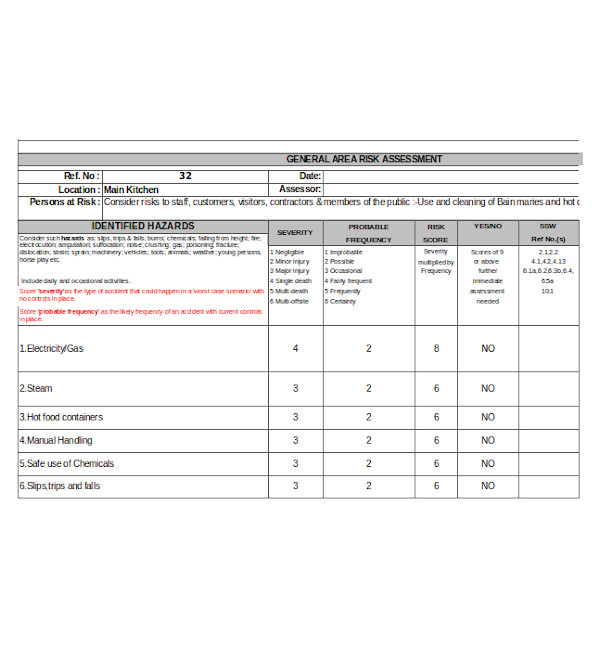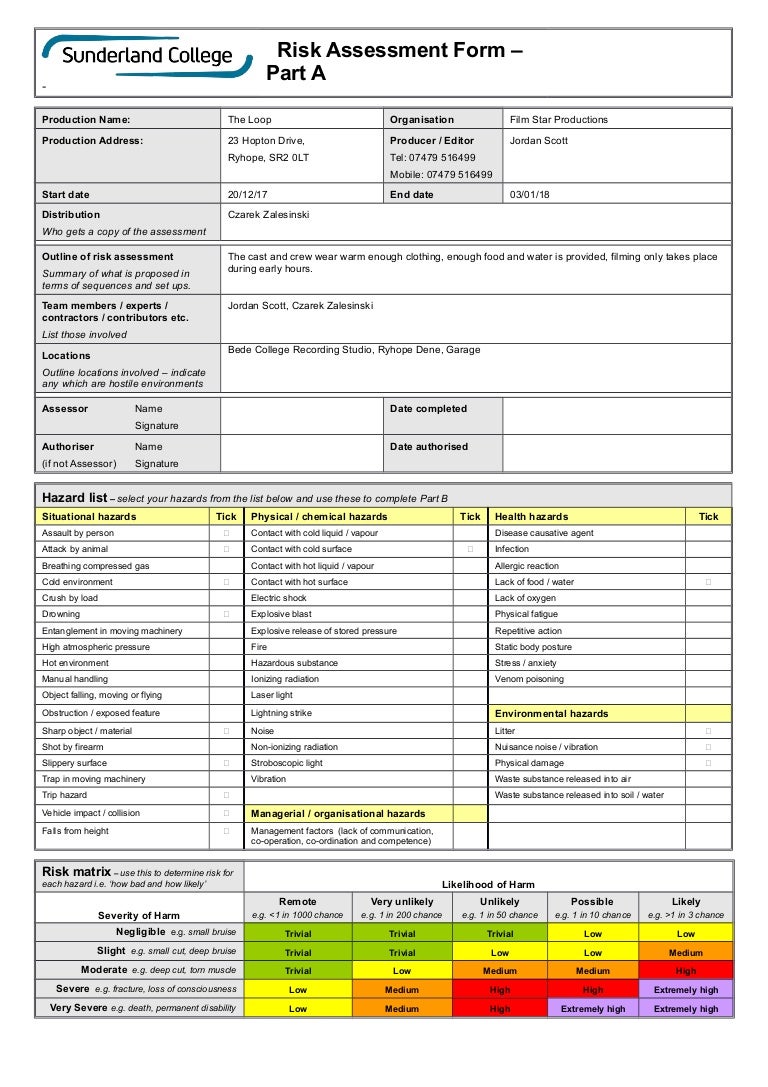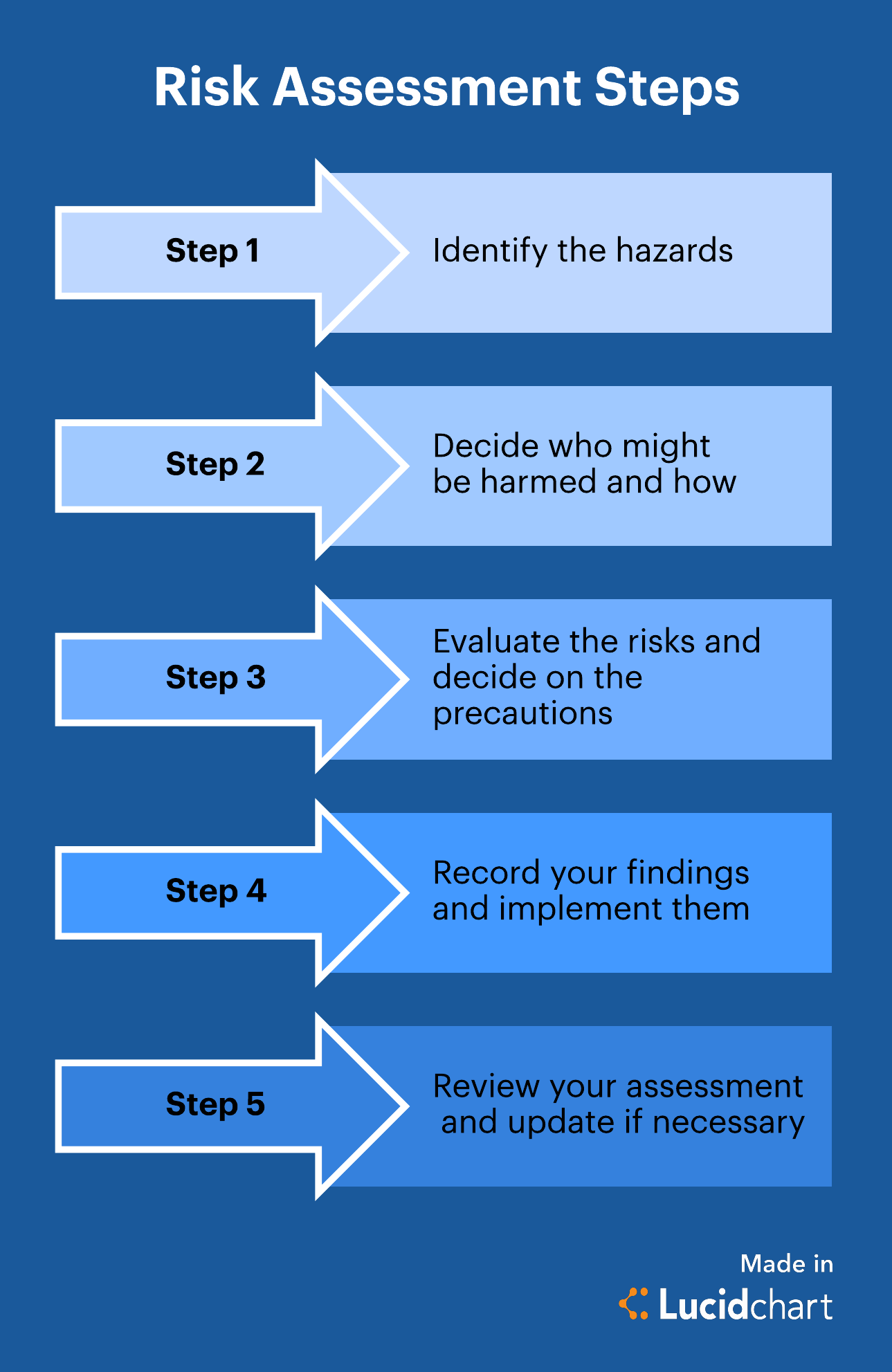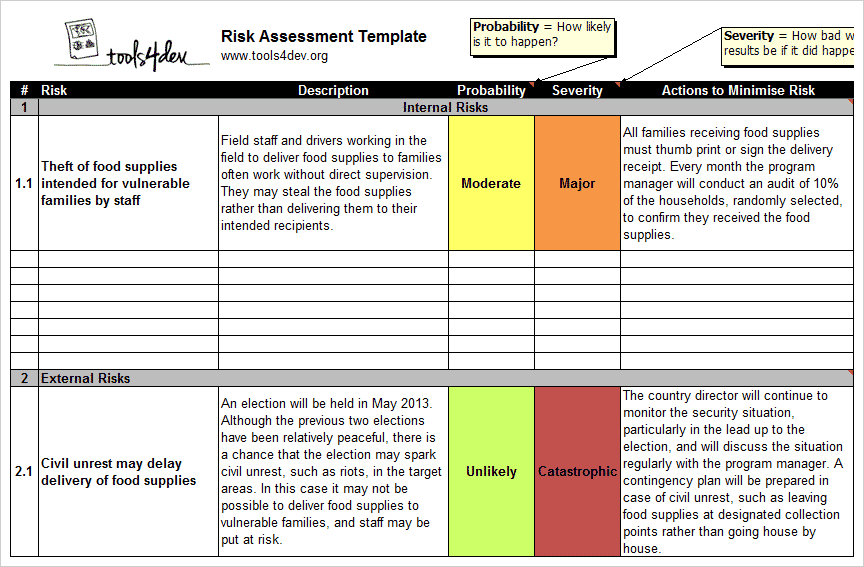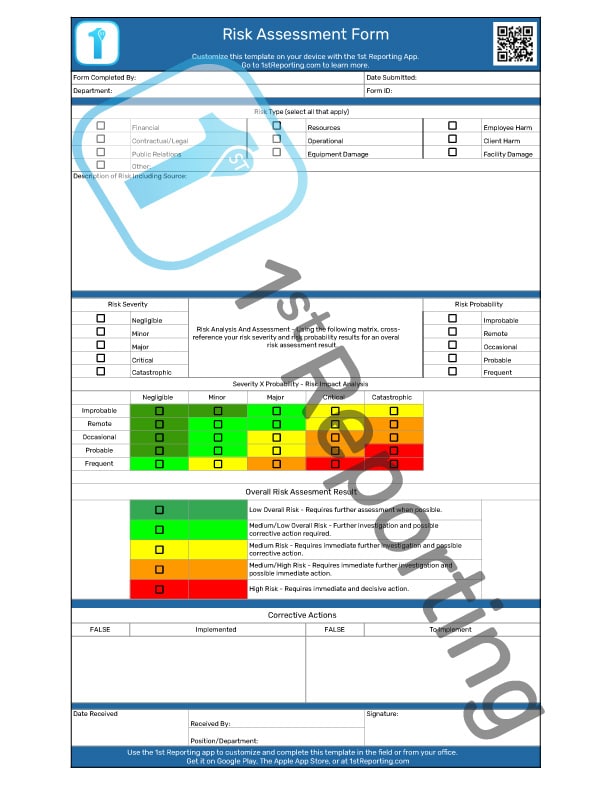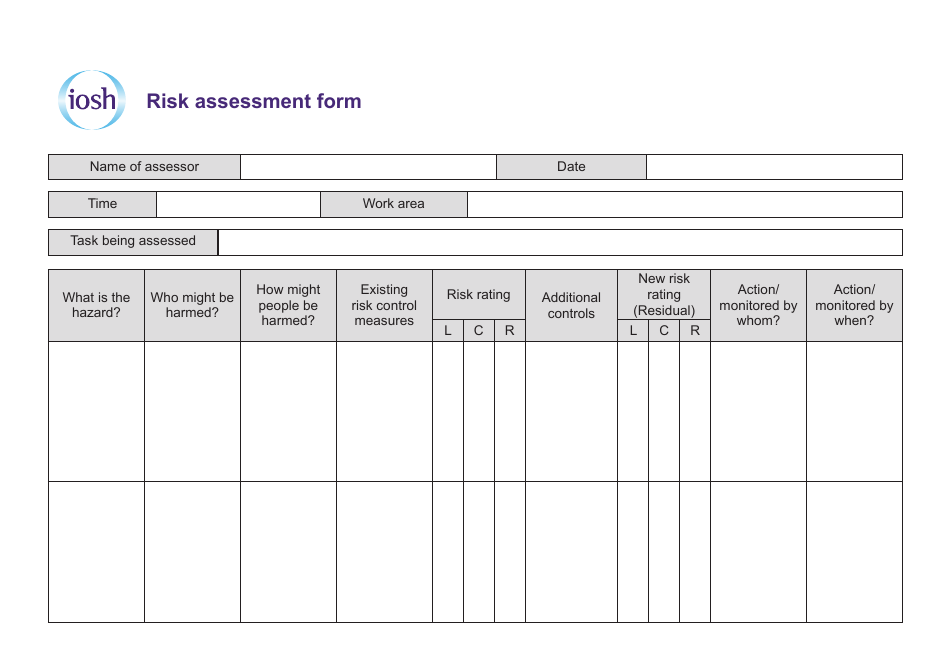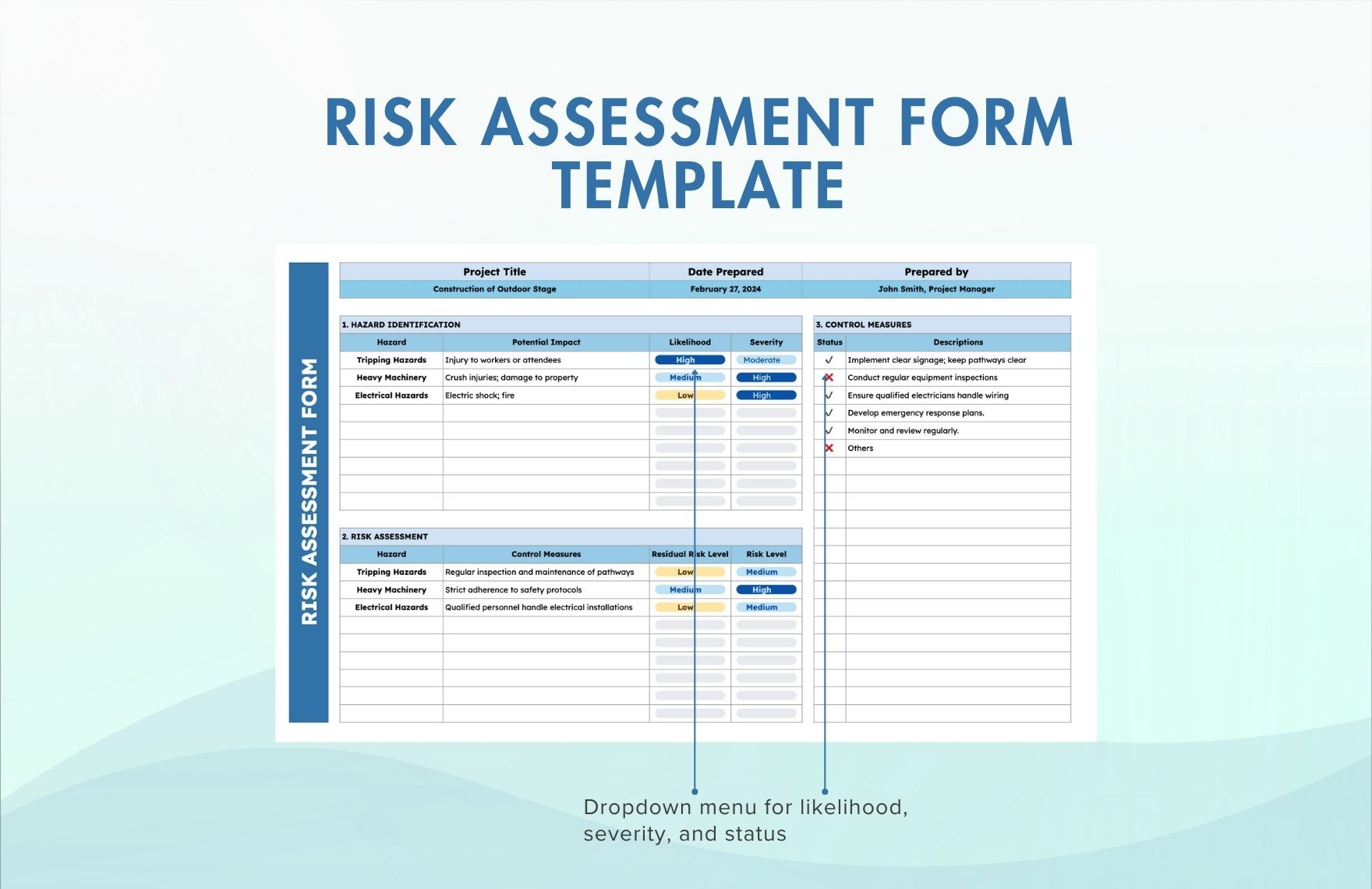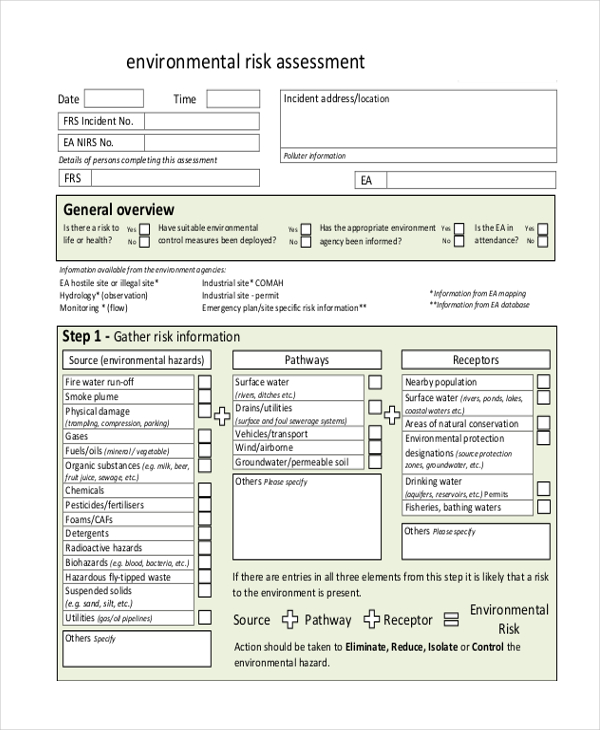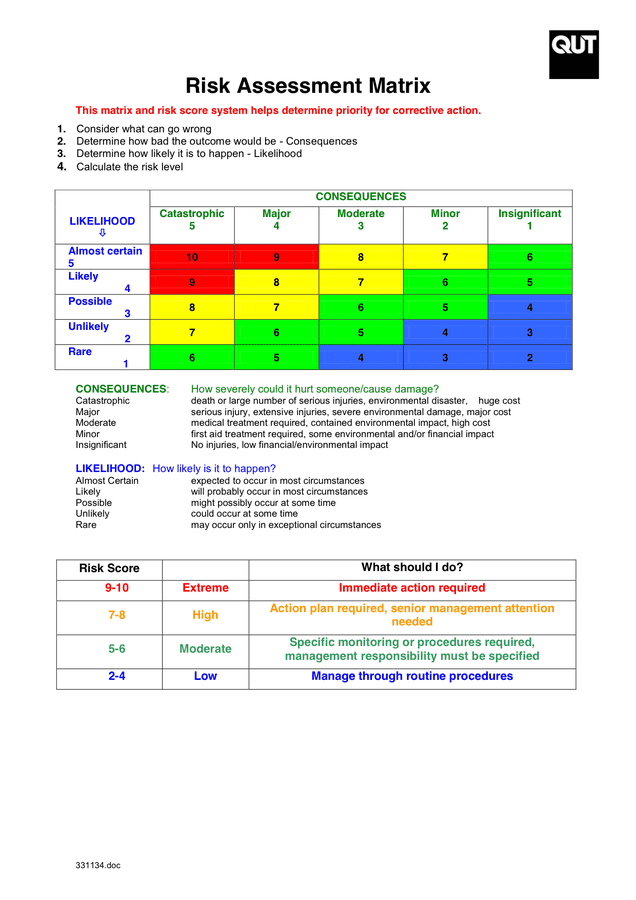The Risk Assessment Form Contains All Of The Following Except

The ubiquitous risk assessment form, a cornerstone of modern safety protocols, is under scrutiny as inconsistencies and omissions in its standardized format are increasingly brought to light. A growing chorus of voices from various sectors, including healthcare, construction, and manufacturing, are questioning the form's efficacy in truly capturing the multifaceted nature of potential hazards.
At the heart of the debate is the question of what crucial elements are consistently absent from these forms. While variations exist across industries, certain recurring gaps are raising concerns about the accuracy and reliability of risk evaluations. This article delves into the specific aspects frequently excluded from standard risk assessment forms, the potential consequences of these omissions, and the push for more comprehensive risk management strategies.
Identifying the Gaps in Risk Assessment
The standard risk assessment form typically includes sections for hazard identification, likelihood assessment, severity evaluation, and control measures. However, critics argue that these categories often fail to adequately address several critical factors. These omissions can significantly undermine the effectiveness of the entire risk management process.
Lack of Consideration for Human Factors
One of the most frequently cited deficiencies is the insufficient focus on human factors. While forms might touch on training and competence, they often neglect to delve into the cognitive and psychological aspects that influence human error.
Factors such as fatigue, stress, and cognitive biases can significantly increase the likelihood of accidents, yet these are rarely explicitly addressed in standard forms. "Risk assessments should account for the mental state of the worker, not just their physical capabilities," stated Dr. Emily Carter, a leading expert in human factors psychology, in a recent industry conference.
Insufficient Detail on Systemic Risks
Another common omission is a thorough examination of systemic risks. Risk assessment forms tend to focus on individual hazards rather than the interconnectedness of various elements within a system.
This narrow focus can lead to a failure to identify potential cascading effects or emergent risks that arise from the interaction of different components. For example, a form might address the risk of a faulty machine but fail to consider how that failure could impact other parts of the production line, leading to further incidents.
Limited Emphasis on Long-Term Consequences
Many risk assessment forms prioritize immediate, short-term risks and neglect to adequately address long-term consequences. This is particularly problematic in industries dealing with hazardous materials or environmental risks.
The forms may focus on the immediate risk of exposure but fail to consider the potential for long-term health effects or environmental damage. This short-sighted approach can lead to inadequate mitigation measures and a failure to prevent significant long-term harm.
Inadequate Consideration of Near Misses and Lessons Learned
Risk assessment processes often don't fully incorporate the learnings from past incidents, particularly near misses. Standard forms frequently lack a dedicated section to analyze near-miss events and integrate those insights into future risk assessments.
Near misses provide valuable data points for identifying potential hazards and weaknesses in existing control measures. By neglecting to capture and analyze this information, organizations miss a crucial opportunity to improve their risk management strategies.
Consequences of Omissions
The absence of these key elements from risk assessment forms can have significant consequences. It can lead to a skewed understanding of the true risk landscape, resulting in inadequate safety measures and an increased likelihood of accidents.
Furthermore, it can create a false sense of security, where organizations believe they are adequately managing risks when, in reality, they are overlooking crucial vulnerabilities. This, in turn, leads to reputational damage, legal liabilities, and, most importantly, harm to individuals and the environment.
Moving Towards More Comprehensive Risk Assessments
Recognizing these deficiencies, there is a growing movement towards more comprehensive and holistic risk assessment practices. This involves expanding the scope of risk assessments to include human factors, systemic risks, long-term consequences, and lessons learned from past incidents.
Several organizations are developing new risk assessment frameworks and tools that incorporate these elements. These frameworks emphasize the importance of collaboration, communication, and continuous improvement in the risk management process. "We need to move beyond simply ticking boxes on a form and towards a culture of proactive risk awareness," stated John Smith, a safety manager at a large manufacturing company.
The Role of Technology
Technology is also playing an increasingly important role in enhancing risk assessment processes. Digital tools can automate data collection, facilitate collaboration, and provide real-time insights into risk trends.
These tools can also incorporate advanced analytics to identify patterns and predict potential hazards that might be missed by traditional risk assessment methods. This enables organizations to make more informed decisions and implement more effective control measures.
Looking Ahead
The future of risk assessment lies in embracing a more comprehensive and proactive approach. This requires a shift in mindset, from viewing risk assessment as a mere compliance exercise to recognizing it as a critical tool for protecting people, assets, and the environment.
By addressing the gaps in standard risk assessment forms and embracing new technologies and frameworks, organizations can create a safer and more sustainable future. The challenge lies in fostering a culture of continuous improvement, where risk management is viewed as an ongoing process rather than a one-time event.
Ultimately, the goal is to create a risk assessment process that truly reflects the complexity of the modern world and empowers organizations to make informed decisions that protect the well-being of all stakeholders. The conversation around risk assessment forms is far from over, and ongoing dialogue and innovation will be crucial in shaping the future of safety management.

